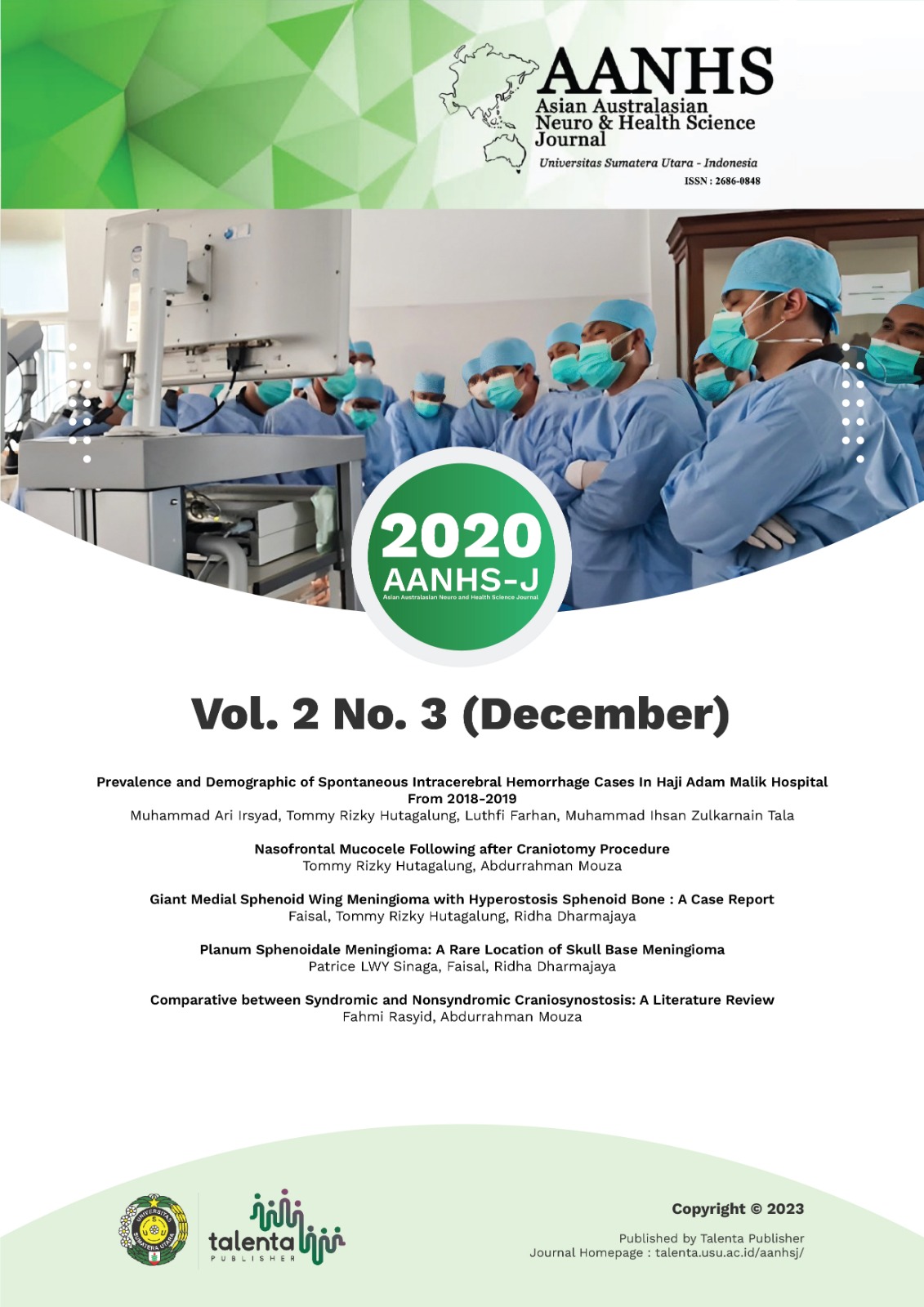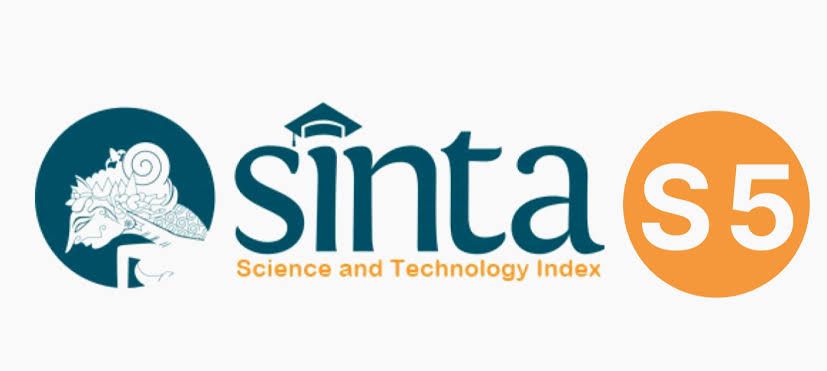Giant Medial Sphenoid Wing Meningioma with Hyperostosis Sphenoid Bone : A Case Report
DOI:
https://doi.org/10.32734/aanhsj.v2i3.4730Keywords:
Medial Sphenoid wing, Meningioma, hyperostosis, NeurooncologyAbstract
Introduction: Meningiomas of the sphenoid wing make up approximately 15–20% of total cranial meningiomas.
Giant medial sphenoid involve the dura of the greater and lesser wings of the sphenoid, the anterior clinoid process,
the spheno-orbital bone and the middle cranial fossa, hyperostosis bone was common to found. Surgical
management of giant medial sphenoid is extremely challenging due to their intimate relationship with vital neural
structures.
Case Report : A 40-year-old woman came to the emergency room with complaints of decreased consciousness that
had been experienced since 1 week , recurrent headaches, weakness of the right limb and history of blurred vision. A
non-contrast head ct scan and MRI brain contrast revealed an extra-axial giant mass meningioma in left medial
sphenoid wing with hyperostosis bone Craniectomy tumor removal was performed with a subtemporal approach
combined with cranio-orbytozygotomy.
Discussion : Hyperostosis is a common phenomenon occuring in different meningiomas with incidence ranging
from 25 to 49% of meningiomas.it is most commonly seen in sphenoid wing and convexity meningioma . The bony
hyperostosis is of neoplastic nature and is responsible for many of the clinical manifestation of such tumors and
hence should be totally drilled to achieve cure and avoid recurrence.
Conclusion : Sphenoid wing meningioma en plaque, mainly meningothelial meningiomas, are characterized by the
associated bony hyperostosis that gives them a distinct radiological appearance. Extensive tumor removal is crucial
for correction of proptosis and adequate visual decompression to achieve satisfactory cosmetic and functional
outcome.
Downloads
Published
How to Cite
Issue
Section
License
Copyright (c) 2020 Asian Australasian Neuro and Health Science Journal (AANHS-J)

This work is licensed under a Creative Commons Attribution-NonCommercial-NoDerivatives 4.0 International License.
The Authors submitting a manuscript do understand that if the manuscript was accepted for publication, the copyright of the article shall be assigned to AANHS Journal.
The copyright encompasses exclusive rights to reproduce and deliver the article in all forms and media. The reproduction of any part of this journal, its storage in databases and its transmission by any form or media will be allowed only with a written permission from Asian Australasian Neuro and Health Science Journal (AANHSJ).
The Copyright Transfer Form can be downloaded here.
The Copyright form should be signed originally and sent to the Editorial Office in the form of original mail or scanned document.














